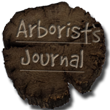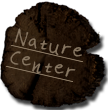 |
 |
 |
 |
 |
 |
 |
 |
 |
 |
 |
 |
The past few years, I have managed to scan through Lant’s daily arborist journal that he writes regarding maladies in trees. Occasionally I post entries that I feel are significant regarding weather related problems, insects, and diseases and how all three are inter-related.
I will continue this practice during year 2023.
Cindy
Operations Director
|
 |
|
 |
 |
 |
 |
 |
 |
 |
December 20, 2018
Sitting in the greenhouse (office in the woods) I hear the wind as I view the large mature white oaks nearby. I am quickly reminded as I see these branches churning in the southwest wind to only have oaks pruned during dormant season. Late November, December or January are good times to be assured this species will be dormant. And finally, one should always sterilize chain saws and pruning equipment with a 50/50 solution of Clorox and water before the process begins.
|
 |
 |
 |
 |
 |
 |
 |
November 14, 2018
Today while in the forest I noticed the ash trees more than I usually do; the emerald ash bore have left his “signature” on most all ash. The leaves are gone from many of the trees now so the trunks of the ash trees are clearly visible. Woodpecker evidence is very clear on the trunks of the ash tree as much of the bark from Ash trees have been stripped away in the woodpecker’s search for larvae from the ash bore. Ash trees are being lost to emerald ash bore, an invasive species. A significant loss to one more member of the mixed hardwood family.
|
 |
 |
 |
 |
 |
 |
 |
October 26, 2018
The past summer I’ve recveived a number of calls with reference to Spruce trees (particularly Blue Spruce trees). Viewing these trees from a distance I frequently observe a sparseness on the lower branches; upon looking closer at the lower branches, oozing fruiting bodies can be seen exiting from the trunk. I am suspicious of Rhizosphaera Canker which does clog the xylem cells, resulting in needle casting of older growth needles.
|
 |
 |
|










